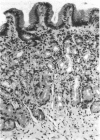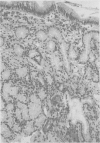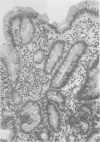Abstract
In a prospective study of the frequency and clinical importance of heterotopic gastric mucosa in the upper oesophagus, 634 consecutive veteran patients (98% male), undergoing endoscopy for various gastrointestinal complaints, were evaluated. Sixty four patients (10%) had heterotopic gastric mucosal patches varying in size from 0.2-0.3 cm to 3 x 4-5 cm often immediately below the upper oesophageal sphincter. Biopsies of these patches showed fundic type gastric mucosa with chief and parietal cells. The 10% prevalence is more than twice the highest reported prevalence rate of endoscopically detected patches in the upper oesophagus. The characteristic location of these patches at the sphincter area, their uniformly fundic type gastric mucosa, and their poor correlation with clinical and endoscopic evidence of gastro-oesophageal reflux support the hypothesis that they are congenital in nature.
Full text
PDF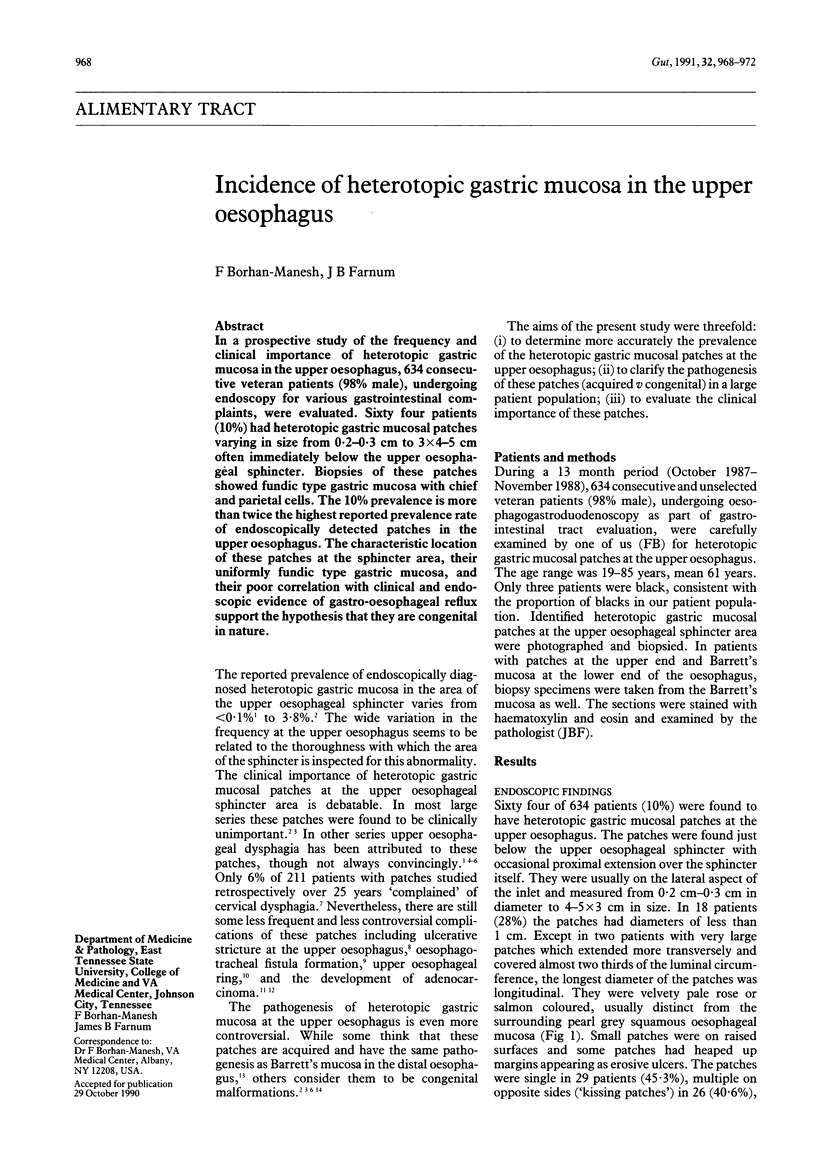
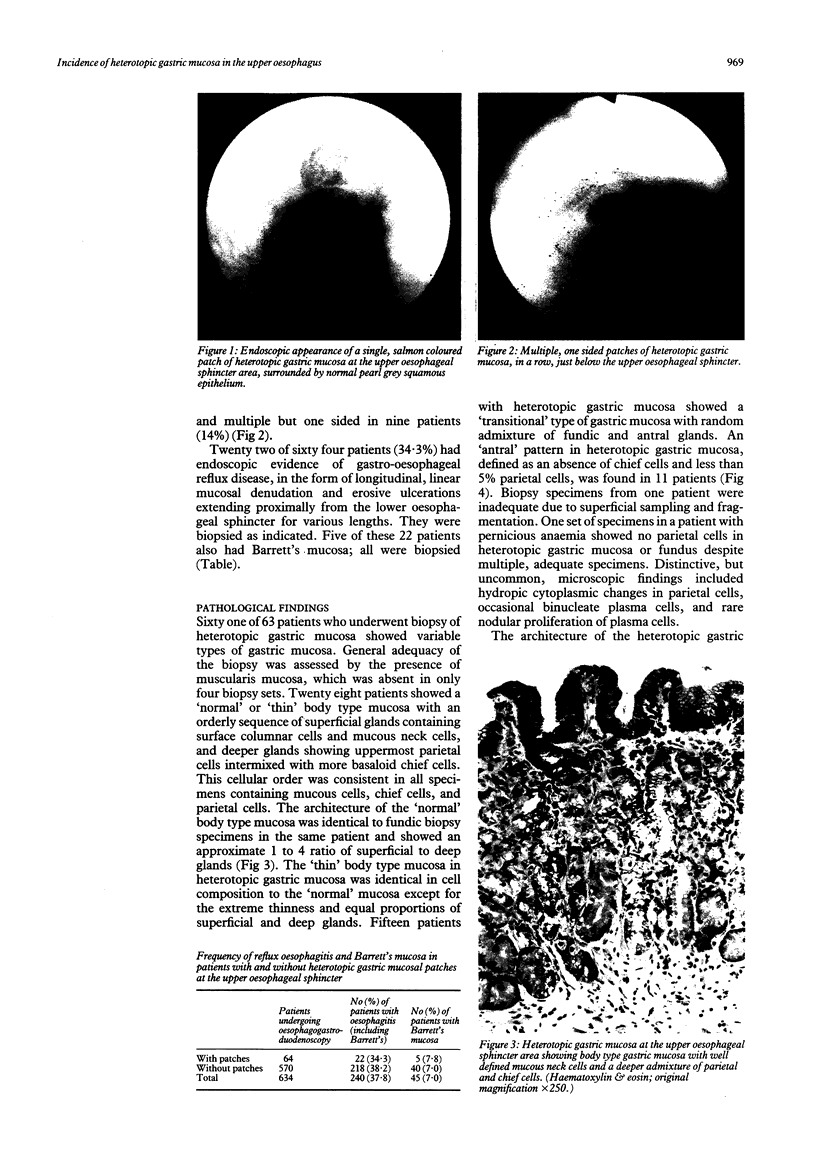
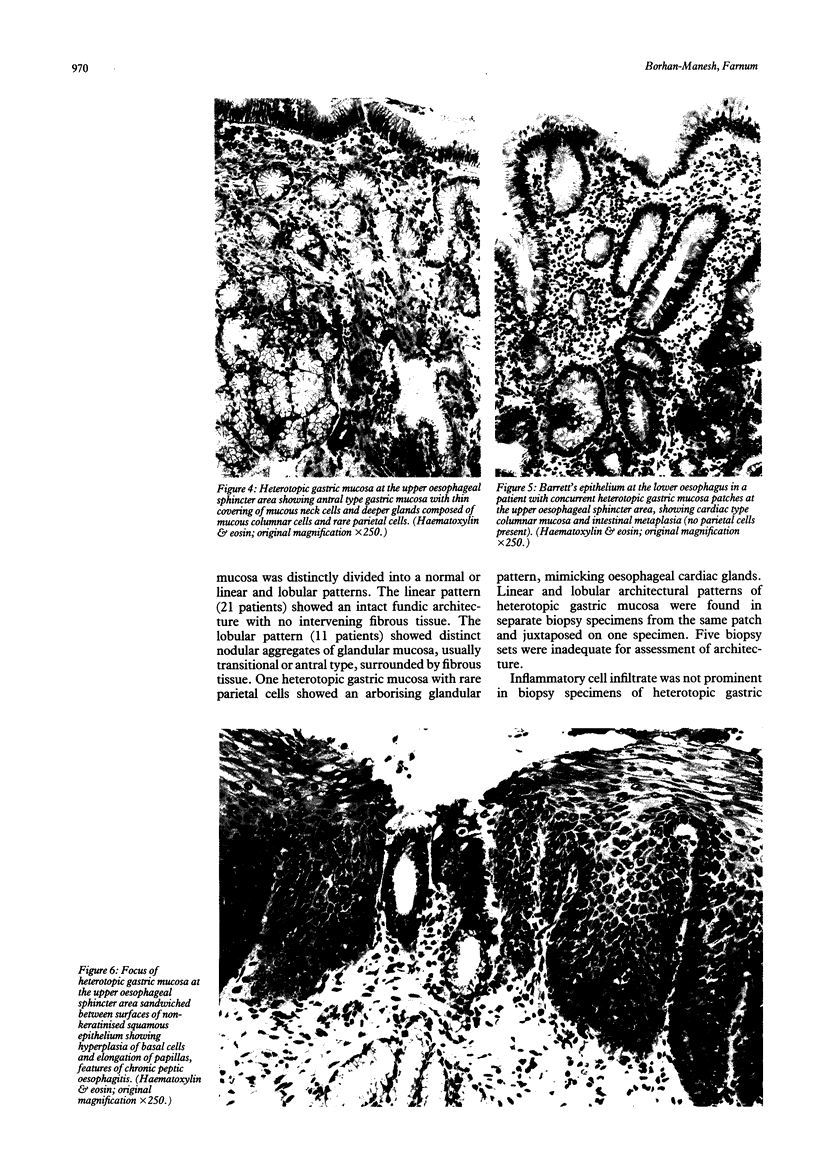
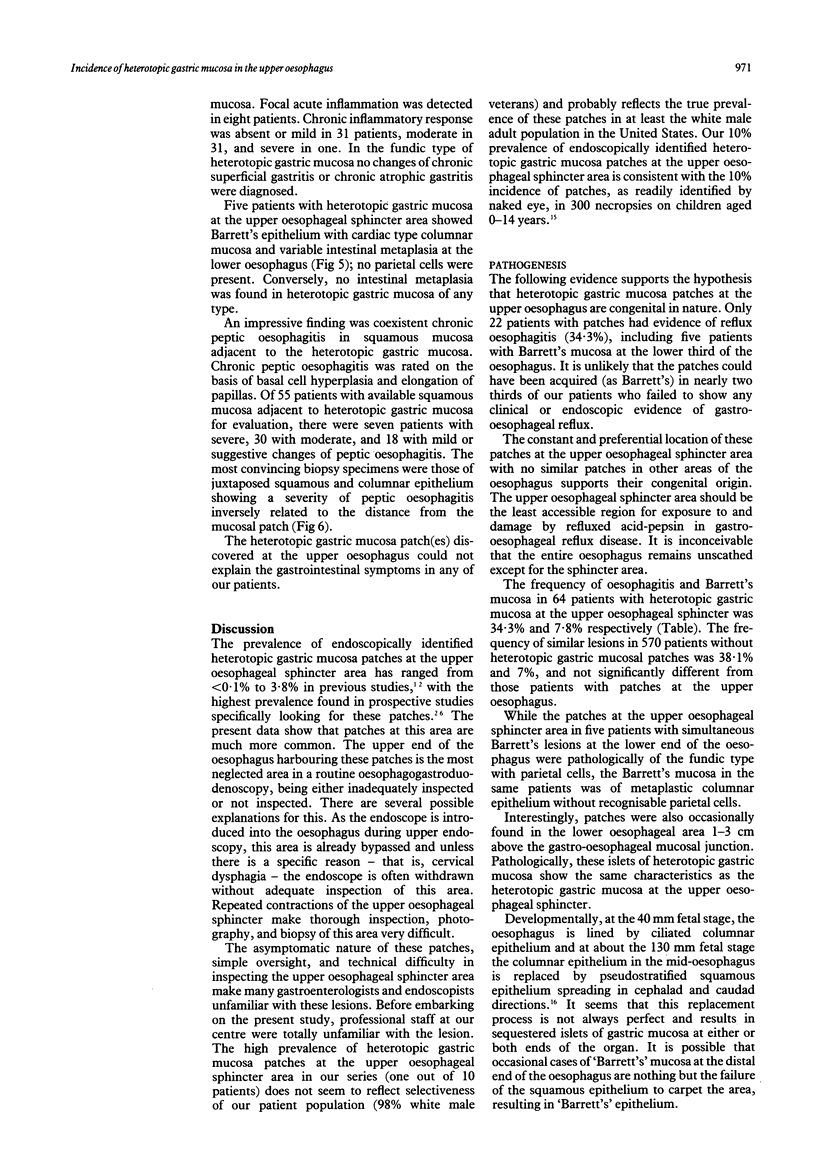
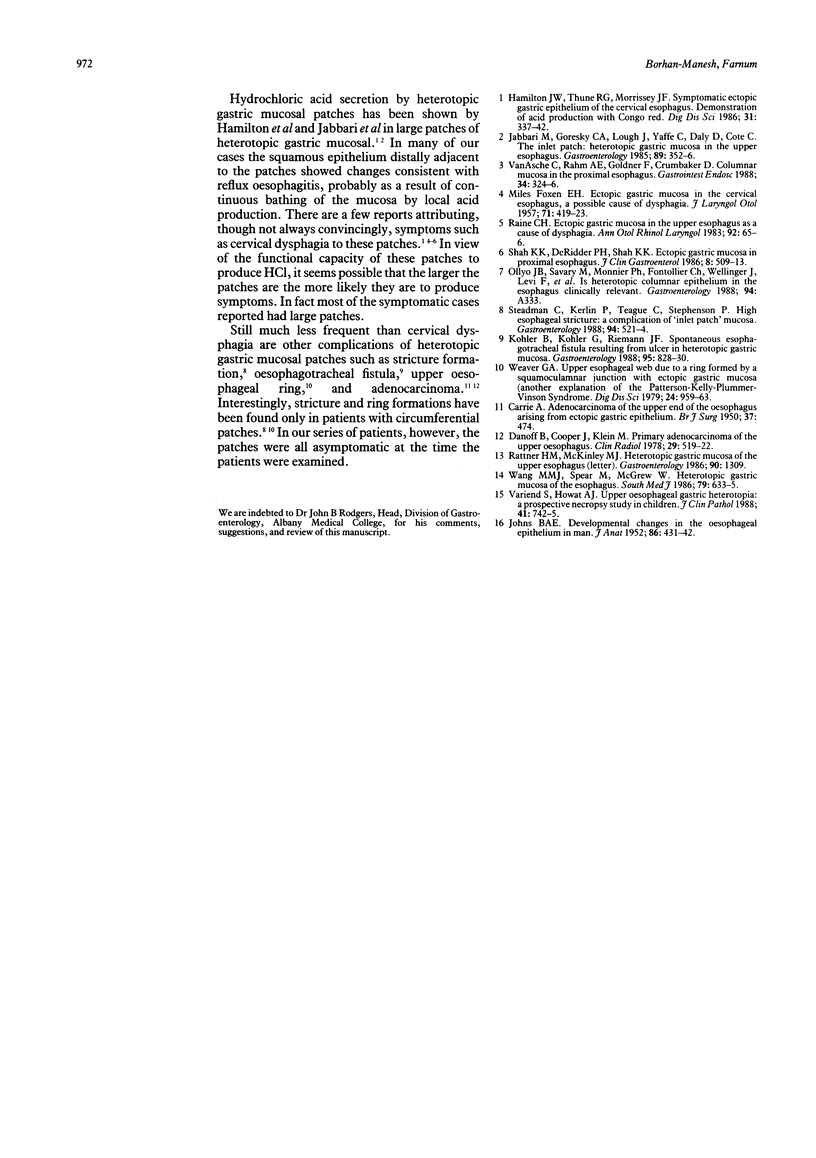
Images in this article
Selected References
These references are in PubMed. This may not be the complete list of references from this article.
- CARRIE A. Adenocarcinoma of the upper end of the oesophagus arising from ectopic gastric epithelium. Br J Surg. 1950 Apr;37(148):474–474. doi: 10.1002/bjs.18003714810. [DOI] [PubMed] [Google Scholar]
- Danoff B., Cooper J., Klein M. Primary adenocarcinoma of the upper oesophagus. Clin Radiol. 1978 Sep;29(5):519–522. doi: 10.1016/s0009-9260(78)80042-7. [DOI] [PubMed] [Google Scholar]
- FOXEN E. H. M. Ectopic gastric mucosa in the cervical oesophagus, a possible cause of dysphagia. J Laryngol Otol. 1957 Jun;71(6):419–423. doi: 10.1017/s0022215100051963. [DOI] [PubMed] [Google Scholar]
- Hamilton J. W., Thune R. G., Morrissey J. F. Symptomatic ectopic gastric epithelium of the cervical esophagus. Demonstration of acid production with Congo red. Dig Dis Sci. 1986 Apr;31(4):337–342. doi: 10.1007/BF01311666. [DOI] [PubMed] [Google Scholar]
- JOHNS B. A. E. Developmental changes in the oesophageal epithelium in man. J Anat. 1952 Oct;86(4):431–442. [PMC free article] [PubMed] [Google Scholar]
- Jabbari M., Goresky C. A., Lough J., Yaffe C., Daly D., Côté C. The inlet patch: heterotopic gastric mucosa in the upper esophagus. Gastroenterology. 1985 Aug;89(2):352–356. doi: 10.1016/0016-5085(85)90336-1. [DOI] [PubMed] [Google Scholar]
- Kohler B., Köhler G., Riemann J. F. Spontaneous esophagotracheal fistula resulting from ulcer in heterotopic gastric mucosa. Gastroenterology. 1988 Sep;95(3):828–830. doi: 10.1016/s0016-5085(88)80035-0. [DOI] [PubMed] [Google Scholar]
- Raine C. H. Ectopic gastric mucosa in the upper esophagus as a cause of dysphagia. Ann Otol Rhinol Laryngol. 1983 Jan-Feb;92(1 Pt 1):65–66. doi: 10.1177/000348948309200115. [DOI] [PubMed] [Google Scholar]
- Rattner H. M., McKinley M. J. Heterotopic gastric mucosa of the upper esophagus. Gastroenterology. 1986 May;90(5 Pt 1):1309–1309. doi: 10.1016/0016-5085(86)90417-8. [DOI] [PubMed] [Google Scholar]
- Shah K. K., DeRidder P. H., Shah K. K. Ectopic gastric mucosa in proximal esophagus. Its clinical significance and hormonal profile. J Clin Gastroenterol. 1986 Oct;8(5):509–513. doi: 10.1097/00004836-198610000-00003. [DOI] [PubMed] [Google Scholar]
- Steadman C., Kerlin P., Teague C., Stephenson P. High esophageal stricture: a complication of "inlet patch" mucosa. Gastroenterology. 1988 Feb;94(2):521–524. doi: 10.1016/0016-5085(88)90448-9. [DOI] [PubMed] [Google Scholar]
- Van Asche C., Rahm A. E., Jr, Goldner F., Crumbaker D. Columnar mucosa in the proximal esophagus. Gastrointest Endosc. 1988 Jul-Aug;34(4):324–326. doi: 10.1016/s0016-5107(88)71366-8. [DOI] [PubMed] [Google Scholar]
- Variend S., Howat A. J. Upper oesophageal gastric heterotopia: a prospective necropsy study in children. J Clin Pathol. 1988 Jul;41(7):742–745. doi: 10.1136/jcp.41.7.742. [DOI] [PMC free article] [PubMed] [Google Scholar]
- Wang M. M., Spear M., McGrew W. Heterotopic gastric mucosa of the esophagus. South Med J. 1986 May;79(5):633–635. doi: 10.1097/00007611-198605000-00030. [DOI] [PubMed] [Google Scholar]
- Weaver G. A. Upper esophageal web due to a ring formed by a squamocolumnar junction with ectopic gastric mucosa (another explanation of the Paterson-Kelly, Plummer-Vinson syndrome). Dig Dis Sci. 1979 Dec;24(12):959–963. doi: 10.1007/BF01311954. [DOI] [PubMed] [Google Scholar]





